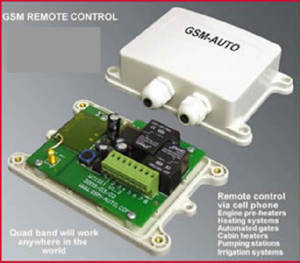|
|
 |
|
Those of us pilots that do any sort of cold weather flying have at some point encountered
the age-old debate about airplane preheating. To do or not to do? There are compelling arguments on both sides of the topic.
In some cases, if you own a small two-seater and keep it in an unheated hangar, then there is no debate: no preheat, no flying
that day.
|
 |
|
For
those that preheat, there is a sub-debate that regularly arises: do you use the big heater available at the FBO and warm your
airplane’s engine up in 45 minutes or less, or do you subscribe to the theory that using a small heat source for a longer
period of time (such as a light bulb or small electric heater under a blanket-draped cowling) is better?
While it’s not our intention to jump into the debate, we can provide a solution to
airplane owners that subscribe to the light bulb or small heater theory that deals with the inconvenience of making two trips
to the airport when they want to fly: once to turn on the heater, and the second time several hours later when ready to fly.
|
 |
|
Up to now, there have been
limited options for this problem: - You
could put your heater on a timer. While this would work, it doesn’t take changes in your schedule into account. Not
flying that day? Heater is still turning on. Want to fly earlier or later than usual? Engine may not be warm enough for starting.
- You
could buy one of the after-market products out there that will allow you to start your heater remotely by telephone. These
do work, but we’ve found that there are drawbacks to each model (not every drawback is applicable to each model):
must purchase subscription to SkyTel or
other national paging network; complicated operation – can only turn on heater from
a PDA cellular phone or paging system’s website; must purchase a cell phone and leave it
duct-taped or velcroed in the heater control box; heater can be turned on by anyone who
calls the phone number to the heater control box; Pricing for remote control unit is usually
more than $375.00 – and that doesn’t include the cell phone or paging plan.
|
 |
|
We found an inexpensive solution in another industry that we specialize
in: home automation. We have been using a device called the GSM Remote Control in many applications to operate equipment remotely.
It’s easily adapted for use by pilots for remote starting of preheaters.
|
 |
|

This unit operates on the GSM cellular network – similar to what
AT&T uses. You simply install a SIM card in the unit programmed by your cell phone dealer and you’re ready to go!
You can easily add a line to your existing cell plan in many cases for $9.99 a month or even less. The remote switch will
even work with some prepaid cell plans – keep in mind though, that these prepaid plans may cost you more in the long
run, since many of them require that you purchase additional time every few months, even if you don’t use any minutes. The GSM Remote Switch
is turned on by calling it – from any phone. It doesn’t use any minutes because it doesn’t answer the phone
– it looks at the Caller ID of the incoming call and if it recognizes it, it will reject the call and turn on the remote
switch. It can be preset to stay on for up to 18 hours. As an additional safety feature, it can also be programmed to ignore
calls if it does not recognize the caller ID. Customizing and programming is simple – it’s done by send it text
messages.
The best part is the price, as it retails for about $199.00. Of course,
it is not ‘plug-and-play’; you’ll have to add a few components to the system to adapt it for use with your
preheater. However, if you’re handy, you’ll find that this is an economical solution that has many more features
at a cheaper price than anything else out there. Feel free to contact us if you have any questions about this product.
|
|
|
Licensed electricians serving Orange
county, Sullivan county, and Ulster county in New York (845) 888-8000
_________________________________________________________________________________________________ All information contained within this site ©2004-2016, Wurtsboro Electric Service, Inc. All rights
reserved.
Reproducing or duplicating any information contained herein is prohibited by law.
|
|
|
 |

